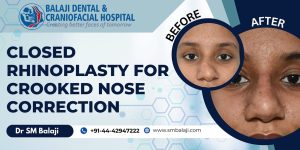Indian Academy of Maxillofacial Surgeons’ Advanced Craniofacial Surgery Workshop
The Indian Academy of Maxillofacial Surgeons conducted their Advanced Craniofacial Surgery workshop on “Current Advances in Cranio-Maxillofacial Surgery” at Hitkarini Dental College and Hospital & Jabalpur Hospital and Research Centre, Jabalpur, on February 15-18, 2018. Many leading Cranio-Maxillofacial surgeons from around the world participated in this workshop. The programme director was Prof. J.N. Khanna and the programme coordinator was Dr. Rajesh Dhirawani.
Foreign Faculty at the Workshop
Prof. G. E. Ghali, Chancellor and Dean, LSU Health Sciences Center and Gamble Professor and Chairman, Oral and Maxillofacial Surgery -Shreveport, USA and his entire team of key opinion leaders played the role of mentors for this huge workshop. Other foreign faculty who were present at the workshop were Dr. Andrew Meram, Dr. Mary Laura Hastings, Dr. Ahmed Tamim and Dr. Hendell Nealy.
Dr. S.M. Balaji Invited for Demonstration of Congenital Facial Palsy Correction Surgery
Prof. Dr. S. M. Balaji was invited as a key operating faculty for this workshop. A case of congenital facial palsy was allotted to Prof. Dr. S. M. Balaji to demonstrate the facial reanimation procedure.
Planning for the Dynamic Temporalis Sling Surgery
The patient was a middle-aged male who had congenital facial palsy and facing a lot of health and social issues due to the facial palsy. Due to case selection and studies were performed. Considering all clinical and anatomical factors, a dynamic facial reanimation using Tensor fascia lata along with partial Tarsorrhaphy (surgery for joining of part of the upper and lower eyelids so as to partially close the eye) was planned.
There were about 200 postgraduates and young oral surgeons from across India as the audience. The surgery was planned as an interactive session where the audience asked questions to operate faculties.
Live Surgical Demonstration with Commentary by Prof. S.M. Balaji
The patient suffered from a congenital lower motor neuron type of paralysis. To correct this condition, a strip of fascia lata from the vastus lateralis was first harvested. The next step of the surgery was performed through a combined preauricular and intraoral approach. The insertion of temporalis into the coronoid process was released at the infratemporal area.
The zygomatic arch was carefully cut and pushed down to free the temporalis muscle. Care was taken to preserve all the vital structures such as the parotid duct and gland in this area. This action was carried out without disturbing the deep temporal artery and nerve. Then through careful manipulation, the lower end of temporalis was identified to which an end of the fascia lata was attached. Through a nasolabial incision, the modiolus was identified. The free end of fascia lata was split into three parts – the lower part was connected to muscles of the lower lip, the middle part to the modiolus and the upper part to the upper lip.
The connections were checked and ensured that the muscle attachments were secured and the dynamic facial reanimation was confirmed by the action of the muscles. To take care of the improper eye closure, a partial lateral tarsorrhaphy was performed. The patient recovered well.
Post-surgical Conference by Dr. S.M. Balaji
Prof. S. M. Balaji cleared doubts from the audience regarding the surgical procedure and carefully mentioned the tips for this kind of surgeries that he has learned over the years. The surgery was well-received by all at the workshop.





